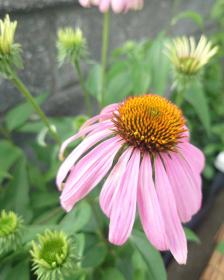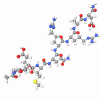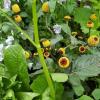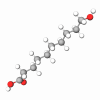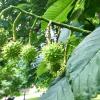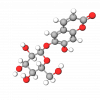Introduced to the medical profession in 1887, from the turn of the century into the 1930s, Coneflower (Echinacea Angustifolia) became the best-selling American medicinal plant among physicians in the United States. Echinacea Angustifolia Extract was used to treat minor and severe infections and viral afflictions and as a nonspecific stimulant to the immune defense system.
Early studies by Albus and Hering (1941), Fischer (1939), and Kriesbisch (1939) observed that various diseases caused by microorganisms responded favorably to local or intravenous therapy with Echinacea Angustifolia Extract even though Coneflower did not have a direct action against the disease-causing pathogens. Albus and Hering noted that the constituents of Echinacea Angustifolia Extract seemed to activate tissue functions that are in some way connected with the body's healing powers.
K. H. Busing (1952, 1955) of the Hygiene Institute of the University of Marburg, in a search for the mechanism for Echinacea's action, began studying Coneflower's effect on the hyaluronidase enzyme system. Hyaluronidase regulates the polymerization, hence the viscosity of cement substances in cellular connective tissue, such as hyaluronic acid. Hyaluronic acid is a mucopolysaccharide found in the ground substance of connective tissue. The ground substance is the material that occupies spaces between cells and connective tissue.
Hyaluronic acid acts both as a binding and protective agent. According to Busing, the state of viscosity of the cement substances between the cells is important for adhering to or trapping microorganisms that enter the tissue. Hyaluronidase regulates the polymerization of hyaluronic acid and can cause its breakdown during the infection process. The greater the resistance (higher viscosity), the better the chances of hyaluronic acid protecting against the spread of an infection.He notes that several types of bacteria produce their own hyaluronidase, which can break down hyaluronic acid in mammals. Under certain environmental conditions, pathogenic bacteria (including streptococci, staphylococci, and pneumococci) form "capsules" using hyaluronic acid and utilize hyaluronidase as a pathway to enter the body's tissues.
Busing found that Echinacea Angustifolia Extract helped raise tissue resistance against pathogens by stabilizing hyaluronic acid and inactivating hyaluronidase produced by the bacteria and intrinsic to animal cellular tissue.
